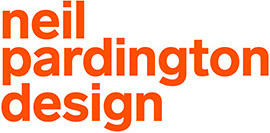Inā kei te mōhio koe ko wai koe, i anga mai koe
i hea, kei te mōhio koe, kei te anga atu ki hea.
i hea, kei te mōhio koe, kei te anga atu ki hea.
If you know who you are and where you are
from, then you will know where you are going.
from, then you will know where you are going.
Toi Te Mana invites readers to climb on to the waka for a remarkable voyage – from ancestral weavers to contemporary artists at the Venice Biennale, from whare whakairo to film, and from Te Puea Hērangi to Michael Parekōwhai.
The authors explore a wide field of art practice: raranga (plaiting), whatu (weaving), moko (tattoo), whakairo (carving), rākai (jewellery), kākahu (textiles), whare (architecture), toi whenua (rock art), painting, photography, sculpture, ceramics, installation art, digital media and film. And they do so over a long time period – from the arrival of Pacific voyagers 800 years ago to contemporary artists in Aotearoa and around the world today. Through wide-ranging chapters alongside focused breakout boxes on individual artists, movements and events, Toi Te Mana is a waka eke noa – an essential book for anyone interested in te ao Māori.
Toi Te Mana is a Māori art history, written by Māori, given to the world.
Toitū te whenua, toitū te tikanga, ka ora ngā toi.
When we hold fast to our land and values, our
art flourishes.
art flourishes.
Original typography used on the cover and in the headings of Toi Te Mana was designed by Neil Pardington. The whakapapa of the font began with the Parihaka typeface – inspired by the form of the letters Māori used on the pou and heke in nineteenth-century wharenui. The Parihaka design was later evolved into the Five Māori Painters and Raranga typefaces that introduced an inline style, inspired by ngā toi whenua (rock art). This inline style has been carried through to the bespoke typeface – ‘Mana’.
